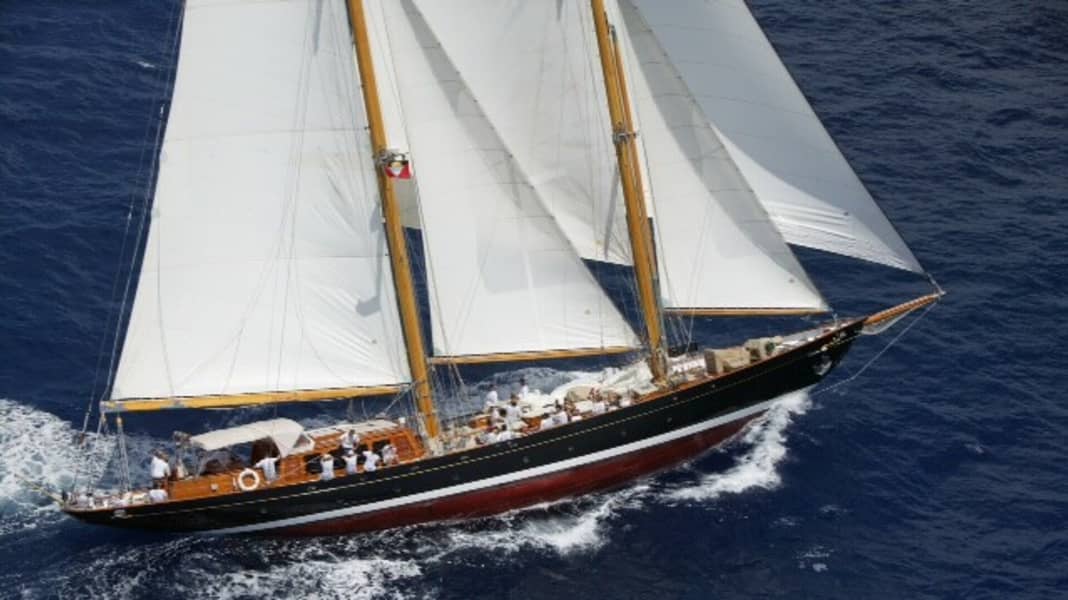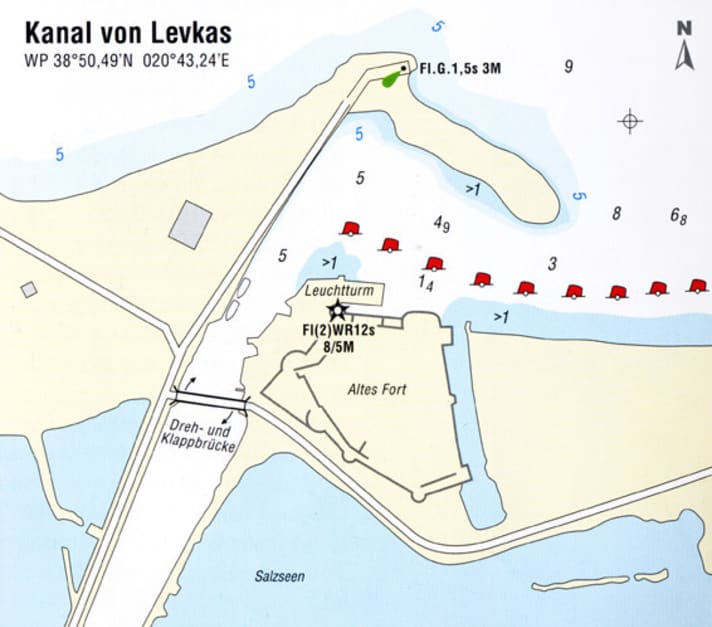
Several cases have been reported to YACHT and the cruiser department of the German Sailing Association that confirm a new collection method on the Lefkas Canal. One of those affected is Karl-Peter Ebner, a man with a lot of experience. He has been skippering the Bremen 35-metre schooner "Aschanti IV", one of the best-known German classic yachts, for 13 years. Ebner tells YACHT about a recent incident in Greece and warns of a brazen rip-off scam.

The captain in original sound:
"Yesterday we wanted to go through the Lefkas Channel, Greece, indicated depth 5.5 metres at the northern exit, chart depths 7 to 5 metres depending on the chart or manuals. According to our soundings, there is only a maximum depth of 3.8 metres.
Local fishing boats are immediately on hand to offer towing assistance for an exorbitant fee. Interestingly, it turns out that one of the tugboats is a member of the Coastguard.
The fishermen wanted to prevent the help of a larger motor yacht, which then towed us free. The fishermen with the Coast Guard man in civilian clothes then fetched a man in uniform who confiscated our ship's papers and summoned us to the Coast Guard. After a long discussion, we were ordered to call an expert the next day to confirm the seaworthiness of the "Aschanti". The speed when running aground was about 2 knots on silt or sand, a long keeler of the size of the "Aschanti" loses at most a little antifouling. But the gentleman from the Coastguard, now in uniform, wanted to make a big deal out of it: How much diesel is on board? Casualties? etc.
I told him that most of the people on board hadn't even noticed that they were stuck! There is a strong suspicion that a nice source of money has been made out of necessity - i.e. shipping. I was shown a whole pile of such reports about stranded yachts at the Coast Guard Office. I asked why a draught warning could not be put up at the entrance to the canal in addition to the speed limit sign - only to be told that that was not their business!
My advice: Skippers of yachts with a draught of more than 3 metres should definitely call the Coast Guard on channel 16 or 12 for depth information before entering the Lefkas Channel."
